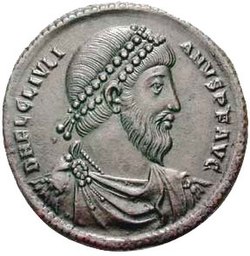This article needs additional citations for verification .(November 2017) |
| Years |
|---|
| Millennium |
| 1st millennium |
| Centuries |
| Decades |
| Years |
| 361 by topic |
|---|
| Leaders |
| Categories |
| Gregorian calendar | 361 CCCLXI |
| Ab urbe condita | 1114 |
| Assyrian calendar | 5111 |
| Balinese saka calendar | 282–283 |
| Bengali calendar | −233 – −232 |
| Berber calendar | 1311 |
| Buddhist calendar | 905 |
| Burmese calendar | −277 |
| Byzantine calendar | 5869–5870 |
| Chinese calendar | 庚申年 (Metal Monkey) 3058 or 2851 — to — 辛酉年 (Metal Rooster) 3059 or 2852 |
| Coptic calendar | 77–78 |
| Discordian calendar | 1527 |
| Ethiopian calendar | 353–354 |
| Hebrew calendar | 4121–4122 |
| Hindu calendars | |
| - Vikram Samvat | 417–418 |
| - Shaka Samvat | 282–283 |
| - Kali Yuga | 3461–3462 |
| Holocene calendar | 10361 |
| Iranian calendar | 261 BP – 260 BP |
| Islamic calendar | 269 BH – 268 BH |
| Javanese calendar | 243–244 |
| Julian calendar | 361 CCCLXI |
| Korean calendar | 2694 |
| Minguo calendar | 1551 before ROC 民前1551年 |
| Nanakshahi calendar | −1107 |
| Seleucid era | 672/673 AG |
| Thai solar calendar | 903–904 |
| Tibetan calendar | ལྕགས་ཕོ་སྤྲེ་ལོ་ (male Iron-Monkey) 487 or 106 or −666 — to — ལྕགས་མོ་བྱ་ལོ་ (female Iron-Bird) 488 or 107 or −665 |

Year 361 ( CCCLXI ) was a common year starting on Monday of the Julian calendar. At the time, it was known as the Year of the Consulship of Taurus and Florentius (or, less frequently, year 1114 Ab urbe condita ). The denomination 361 for this year has been used since the early medieval period, when the Anno Domini calendar era became the prevalent method in Europe for naming years.

